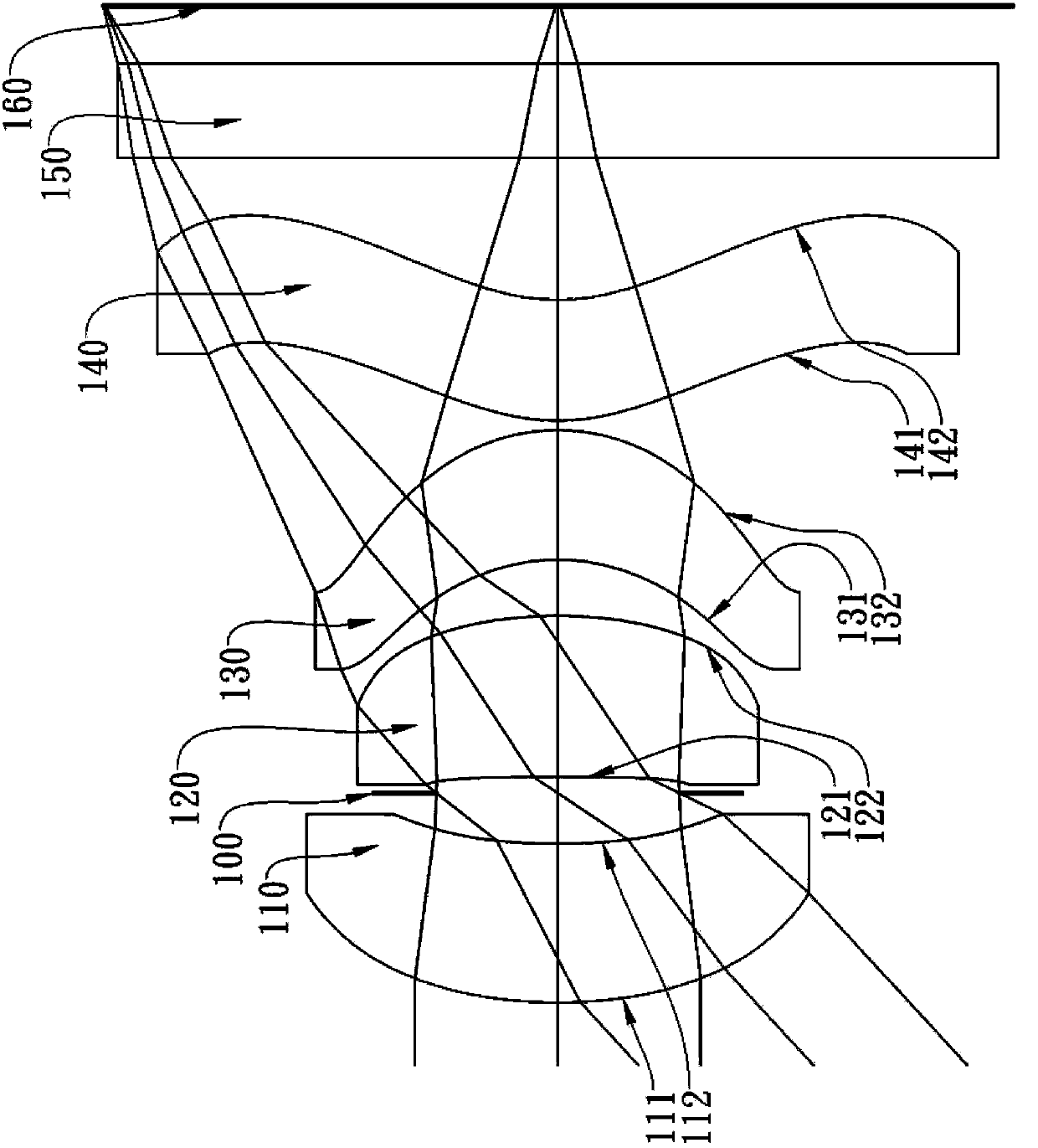Image capturing lens system
A lens group and lens technology, applied in optics, instruments, optical components, etc., can solve the problems of low manufacturing yield, insufficient balance configuration, and inability to effectively shorten the total length, and achieve the effect of maintaining miniaturization and improving image quality.
- Summary
- Abstract
- Description
- Claims
- Application Information
AI Technical Summary
Problems solved by technology
Method used
Image
Examples
no. 1 example 》
[0073] For a schematic diagram of the optical system see Figure 1A , for aberration curves see Figure 1B . The lens group of the pickup system is mainly composed of four lenses with refractive power, which are sequentially included from the object side to the image side:
[0074] A first lens (110) with positive refractive power, its object side (111) is convex at the near optical axis, its image side (112) is concave at the near optical axis, its material is plastic, and its two sides are is aspheric;
[0075] A second lens (120) with positive refractive power, its object side (121) is concave at the near optical axis, its image side (122) is convex at the near optical axis, its material is plastic, and its two sides are is aspheric;
[0076] A third lens (130) with positive refractive power, its object side (131) is concave at the near optical axis, its image side (132) is convex at the near optical axis, its material is plastic, and its two sides are is aspherical; an...
no. 2 example 》
[0101] For a schematic diagram of the optical system see Figure 2A , for aberration curves see Figure 2B . The lens group of the pickup system is mainly composed of four lenses with refractive power, which are sequentially included from the object side to the image side:
[0102] A first lens (210) with positive refractive power, its object side (211) is convex at the near optical axis, its image side (212) is concave at the near optical axis, its material is plastic, and its two sides are is aspheric;
[0103] A second lens (220) with positive refractive power, its object side (221) is convex at the near optical axis, its image side (222) is convex at the near optical axis, its material is plastic, and its two sides are is aspheric;
[0104] A third lens (230) with positive refractive power, its object side (231) is concave at the near optical axis, its image side (232) is convex at the near optical axis, its material is plastic, and its two sides are is aspherical; an...
no. 3 example 》
[0114] For a schematic diagram of the optical system see Figure 3A , for aberration curves see Figure 3B . The lens group of the pickup system is mainly composed of four lenses with refractive power, which are sequentially included from the object side to the image side:
[0115] A first lens (310) with positive refractive power, its object side (311) is convex at the near optical axis, its image side (312) is concave at the near optical axis, its material is plastic, and its two sides are is aspheric;
[0116] A second lens (320) with positive refractive power, its object side (321) is convex at the near optical axis, its image side (322) is convex at the near optical axis, its material is plastic, and its two sides are is aspheric;
[0117] A third lens (330) with positive refractive power, its object side (331) is concave at the near optical axis, its image side (332) is convex at the near optical axis, its material is plastic, and its two sides are is aspherical; an...
PUM
 Login to View More
Login to View More Abstract
Description
Claims
Application Information
 Login to View More
Login to View More - R&D
- Intellectual Property
- Life Sciences
- Materials
- Tech Scout
- Unparalleled Data Quality
- Higher Quality Content
- 60% Fewer Hallucinations
Browse by: Latest US Patents, China's latest patents, Technical Efficacy Thesaurus, Application Domain, Technology Topic, Popular Technical Reports.
© 2025 PatSnap. All rights reserved.Legal|Privacy policy|Modern Slavery Act Transparency Statement|Sitemap|About US| Contact US: help@patsnap.com



